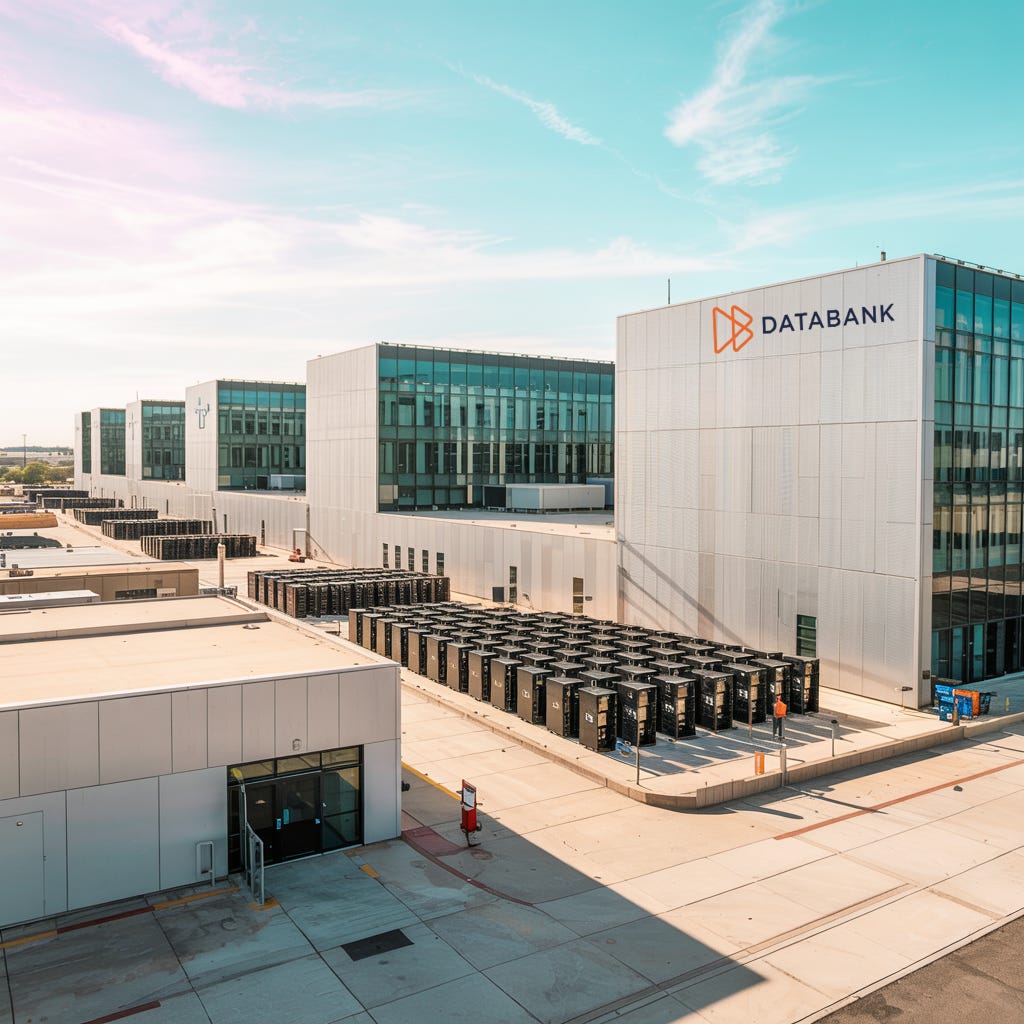Is DataBank’s $1.07B ABS the Model That Reprices Hyperscale Capital?
Inside a three-market package: verticalizing the liability stack, energization risk, and the spread between “leased” and “live.”
Welcome to Global Data Center Hub. Join investors, operators, and innovators reading to stay ahead of the latest trends in the data center sector in developed and emerging markets globally.
A Deal That Looks Straightforward Until You Map the Flywheel
On the surface, DataBank’s $1.067 billion issuance against three fully leased U.S. facilities looks like efficient term-out financing. In reality, it’s about creating a repeatable conveyor belt: season capacity, wrap cash flows in a ratings-friendly structure, term it out with covenants, then recycle proceeds into new megawatts.
In an AI cycle constrained by transformers, interconnects, and thermal upgrades not headlines that funding rhythm is the real story.
Why the Structure Matters
This isn’t balance-sheet bank debt with a new label. It’s a hyperscale-tilted shelf built on single-tenant, investment-grade obligations and long-dated renewal mechanics. Senior paper rests on DSCR tests, LTV guardrails, liquidity, and cash-trap triggers that convert lease predictability into bond math.
The result is a model where DataBank can stabilize, securitize, and redeploy, keeping mature assets on the platform instead of selling the very boxes that anchor network effects.
Markets, Power, and the Energization Curve
The collateral reflects three edge-to-core strategies: Ashburn for ecosystem density and price discovery, Atlanta for scale through land and power economics, and Orangeburg for New York metro reach with diverse routes.
Credit quality rests on two 40MW single-tenant sites, while a 20MW multitenant facility introduces additional yield and scrutiny through a non-investment-grade anchor.
The central underwriting test is not occupancy but execution: contracted load must convert to energized load on schedule, and thermal efficiency must hold as power densities climb.
Global Rhymes and the Difference Here
Across digital infrastructure, ownership is moving toward strategic and sovereign-aligned investors, while permanent capital increasingly flows through SASB and ABS structures.
What distinguishes this case is deliberate platform design: monetizing receivables instead of real estate, protecting interconnect ecosystems while lowering the cost of capital, and repeating the cycle as each tranche of capacity matures.
This case highlights deliberate platform design: monetizing receivables, protecting interconnect ecosystems, and repeating cycles raising whether fiber, not power, is the real bottleneck as platforms scale.
Key Questions Sophisticated Money Will Press
Spread vs. Stickiness: Are investors truly being compensated for blue-chip tenancy, or is pricing still closer to generic commercial risk?
Lease-to-Live Delta: How predictable is the conversion of signed commitments into energized load, given grid queues and supply pressures?
Concentration Math: Does today’s tenant mix deliver immediate spread benefit but introduce a longer-term rollover cliff?
Orangeburg Risk Budget: Is the weaker anchor effectively balanced by structural safeguards and stronger counterparties elsewhere?
Covenant Calibration: Do reserve levels, ARDs, and coverage ratios provide enough insulation if operating metrics soften?
What Boards, Lenders, and Policymakers Should Take From This
Boards must treat power and cooling as core capabilities on par with intellectual property, not just procurement lines. Leadership incentives should align with energized megawatts and utilization curves rather than bookings alone.
For lenders, the true credit variables are shifting. Dated interconnect commitments and transformer lead times will increasingly determine pricing, moving from diligence footnotes to primary risk metrics.
Policymakers aiming to attract capacity must recognize that permitting velocity and grid certainty directly influence spreads. If milestones aren’t bankable, markets will reflect it.
Policymakers aiming to attract capacity must recognize that permitting velocity and grid certainty directly influence spreads. Those same levers sit at the heart of America’s AI Action Plan, which links infrastructure timelines to competitiveness.
The Bigger Picture
This transaction isn’t about three buildings refinancing. It’s about proving that a hyperscale-anchored ABS shelf can reliably bridge lease execution to the next campus. By converting stabilized cash flows into low-cost paper while maintaining service quality and thermal efficiency, DataBank can re-rate multiples and scale the model.
But if energization timelines slip or tenant concentration pressures renewals, the penalty will show up first in basis points, then in growth.

